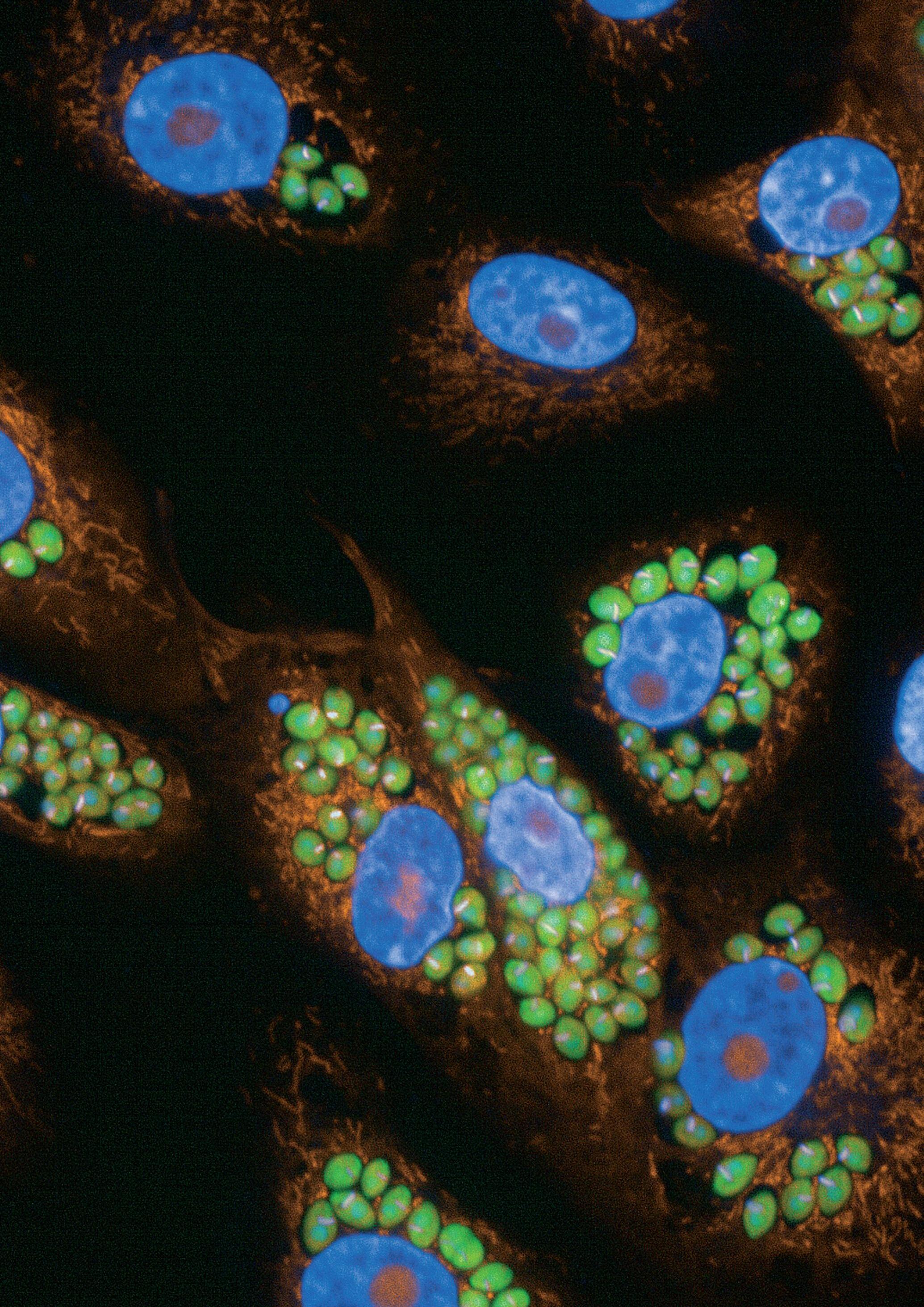
3 minute read
Overcoming the challenges for Chagas disease drug discovery
Chagas disease is caused by the parasite Trypanosoma cruzi (T. cruzi ) and affects millions of people. The drug discovery pipeline for Chagas disease remains very sparse due to the challenges associated with developing new drugs for this disease As Chagas disease is a chronic disease caused by a very low parasite burden we are aiming to develop compounds that can eradicate all parasites from an infected person Identifying such compounds is a major challenge To improve our chances of success in this area we are developing multiple new approaches and technologies in WCAIR.
1 Hit-discovery screening cascade
Advertisement
Our cascade is designed to quickly identify the most promising compounds for entry into lead-optimisation The process starts with a high-throughput screen to test hundreds of thousands of compounds for their ability to kill intracellular parasites, without affecting their host cells. Hits that act through an enzyme called CYP51 are then rapidly removed, as this mode of action has been invalidated through clinical studies. The remaining hits are profiled in further mode of action assays to identify compounds that act through known targets The rate-of- kill assay developed in WCAIR is then used to determine how fast compounds can kill the parasites This helps to prioritise compounds and design dosing regimens for animal models of disease Finally, the most promising compounds go through a two-month long washout assay to check they can kill every single T cruzi parasite1 We treat cells and parasites with compounds for up to 16 days. Then compounds are removed, and we observe the cells for up to two months to assure that no viable parasites emerge
To date this assay provides the best in vitro predictor of the ability for a compound series to achieve sterile cure in an animal efficacy model As such this assay is now a key gatekeeper before we move compounds into animal model studies
2 Combination treatment
We have built a combination screening platform and are testing combinations of compounds with different modes of action to assess if they can eradicate all parasites in vitro and in vivo Our findings are encouraging and indicate that some combinations are indeed able to clear all parasites rapidly, even when each compound alone cannot achieve this. This opens the door for the development of short course treatments that would be transformative for patients

Interestingly we are also finding combinations that are less good at clearing the parasites compared to the individual compounds Why we see this apparent antagonism with some combinations remains unknown
References
3 Expression of multi-subunit targets for structure-guided drug discovery
Purification of large protein complexes from parasites for drug screening efforts (e.g. the proteasome) is a major challenge, due to long timelines and bio-safety concerns To overcome these issues, we have developed the technology to express and purify parasite proteasomes, allowing us to carry out high-throughput screening campaigns and identify new inhibitors Additionally, we have also generated various mutant proteasomes that provide detailed information on the mode of inhibition of new compounds. Furthermore, we are implementing cryo-EM technology at the University of Dundee to facilitate structure-guided drug discovery programmes on large protein complexes
4 More physiologically relevant host cell models
T cruzi parasites live inside a wide range of mammalian host cells, and little is known about the impact of host cell type on drug susceptibility, in particular in the context of physiologically relevant cell models In collaboration with the University of Dundee Stem Cell Facility we have generated human host cells relevant to T. cruzi infection and are characterizing the behaviour of the parasites in these host cells Our main aim is to explore any host-cell dependent differences in compound susceptibility and the underlying reasons for this
5 New modalities
Targeted protein degradation approaches are currently being explored extensively for the treatment of non-communicable diseases such as cancer and neurodegeneration We are seeking to apply these approaches, using modalities such as PROTACs and molecular glues, to protozoan parasites
Based on work carried out in Prof. Mark Field’s group, we have identified candidate E3 ligases and are assessing their tractability for targeted protein degradation approaches in kinetoplastid parasites
1 Development of Trypanosoma cruzi in vitro assays to identify compounds suitable for progression in Chagas’ disease drug discovery MacLean LM, Thomas J, Lewis MD, Cotillo I, Gray DW, De Rycker M (2018) PLoS Negl Trop Dis 12(7): e0006612










